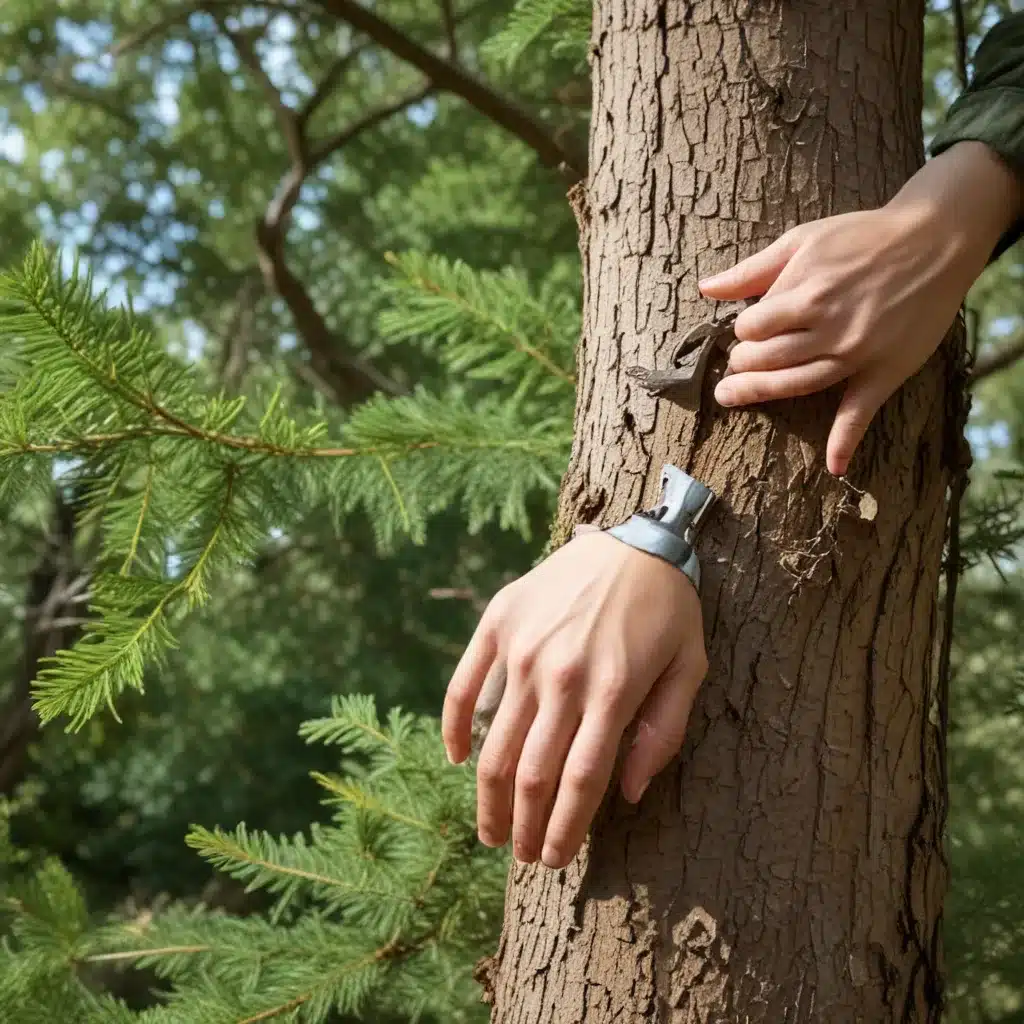
As a TriCounty Tree Care specialist, I’m passionate about empowering homeowners to take an active role in maintaining the health and longevity of their trees. While professional arborists play a vital part, understanding the fundamentals of tree anatomy and physiology can equip you to proactively monitor for issues and apply appropriate DIY treatment methods. Let’s explore the science behind tree health and uncover practical techniques to identify, manage, and prevent common diseases.
Tree Anatomy and Physiology
At the core of tree health is a deep appreciation for plant biology. The primary structural components include the roots, trunk, branches, leaves, and reproductive structures. Roots anchor the tree, absorb water and nutrients from the soil, and store carbohydrates. The trunk and branches provide structural support and facilitate the transport of resources throughout the organism. Leaves perform photosynthesis, producing the energy necessary for growth and development.
A tree’s growth and development are governed by intricate physiological processes. As the cambium layer expands, new xylem and phloem tissues form, allowing for increased height, girth, and branching. Environmental factors like sunlight, precipitation, temperature, and soil quality greatly influence the rate and patterns of this growth. Understanding these natural cycles is key to recognizing when a tree may be under stress.
Tree Disease Identification
Detecting tree health issues early is crucial for effective management. Visual symptom recognition is often the first line of defense. Discolored, wilting, or prematurely dropping leaves; peeling bark; fungal growths; and dieback can all signal the presence of a disease. Additionally, monitoring for changes in growth rate or overall vigor can provide valuable clues.
While keen observation skills are helpful, advanced diagnostic tools and techniques may be necessary to pinpoint the underlying cause. Soil tests can reveal nutrient imbalances or the presence of pathogens. Tissue samples analyzed under a microscope or through DNA sequencing can identify specific bacteria, fungi, or insects responsible for the problem. TriCounty Tree Care recommends consulting a certified arborist for professional diagnosis and guidance.
Disease Treatment Approaches
Once a disease has been identified, a multifaceted treatment plan can be implemented. Cultural control methods focus on optimizing the growing environment to promote the tree’s natural defenses. This may involve adjusting irrigation, mulching, pruning, or even relocating the tree to a more suitable site.
In cases where cultural controls prove insufficient, chemical management strategies may be warranted. Fungicides, insecticides, and growth regulators can be selectively applied to target the specific pathogen or pest. However, it’s crucial to follow all label instructions and consult with a licensed professional to ensure the safe and responsible use of these products.
Environmental Impacts on Tree Health
Trees are highly sensitive to their surrounding environment, with both abiotic (non-living) and biotic (living) stress factors posing significant threats. Abiotic stressors like drought, extreme temperatures, air pollution, and soil compaction can weaken a tree’s defenses and leave it vulnerable to disease. Biotic factors, such as invasive pests, competing vegetation, and microbial pathogens, can directly attack and compromise the tree’s integrity.
Understanding these environmental influences is key to developing a holistic approach to tree care. By mitigating stress factors and fostering optimal growing conditions, you can strengthen a tree’s natural resilience and reduce its susceptibility to disease.
DIY Tree Health Assessments
As a homeowner, you can take an active role in monitoring the health of your trees through regular visual inspections. Carefully examine the leaves, branches, trunk, and root zone for any signs of distress. Additionally, consider collecting soil and tissue samples for professional analysis to identify any underlying nutritional or pathogenic issues.
When conducting these assessments, be mindful of safety precautions, and don’t hesitate to consult a certified arborist from TriCounty Tree Care if you encounter any concerns beyond your expertise. Their specialized knowledge and equipment can provide invaluable insights to guide your tree care decisions.
Pruning and Maintenance
Proper pruning techniques are essential for maintaining tree health and mitigating disease risk. Removing dead, damaged, or crossing branches can improve air circulation and light penetration, reducing the likelihood of fungal infections. Timing is also crucial, as different species may require pruning at specific points in their annual growth cycle.
Alongside strategic pruning, a comprehensive maintenance regimen is crucial. This may include regular inspections, mulching, irrigation management, and addressing any soil or nutrient deficiencies. By proactively caring for your trees, you can help them thrive and reduce the need for more intensive interventions down the line.
Tree Species Considerations
When selecting or caring for trees, it’s essential to consider the unique characteristics and needs of different tree species, both native and non-native. Some cultivars may be inherently more resilient to certain pests or diseases, while others may be better suited to the local climate and soil conditions. Consulting with the experts at TriCounty Tree Care can help you make informed decisions that optimize the long-term health and longevity of your trees.
Sustainable Urban Forestry
As we strive to create greener, more livable communities, the role of urban forestry becomes increasingly vital. Engaging with your local government and participating in community tree-planting initiatives can help shape municipal tree management policies that prioritize environmental sustainability and public health. By working together, we can foster an urban landscape that is both aesthetically pleasing and ecologically resilient.
In conclusion, understanding the science behind tree health empowers homeowners to take an active role in identifying, treating, and preventing common diseases. By embracing DIY techniques, leveraging professional expertise, and adopting sustainable practices, we can ensure the long-term vitality of our urban and suburban tree canopies. For more information and personalized guidance, connect with the experts at TriCounty Tree Care.


